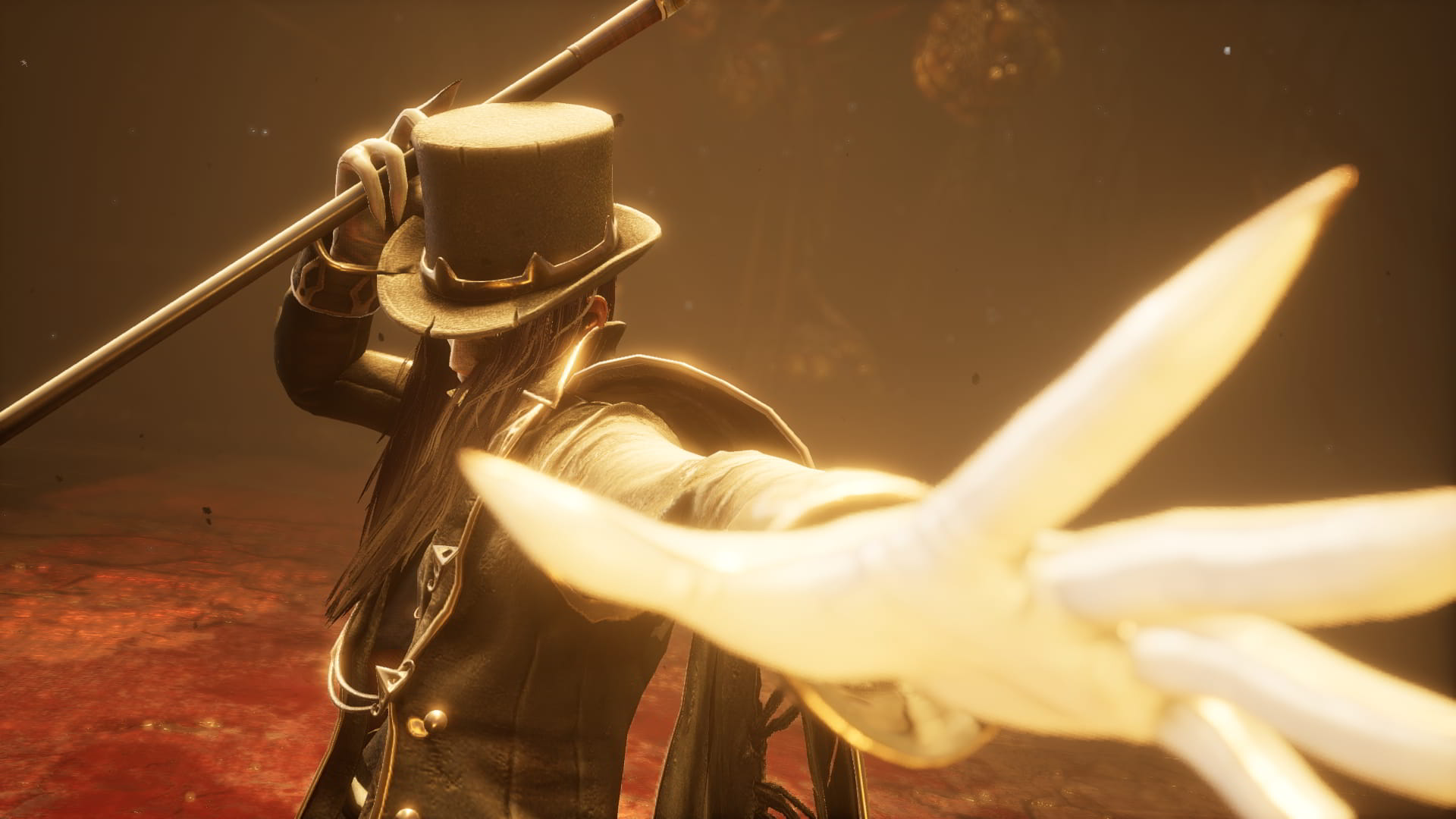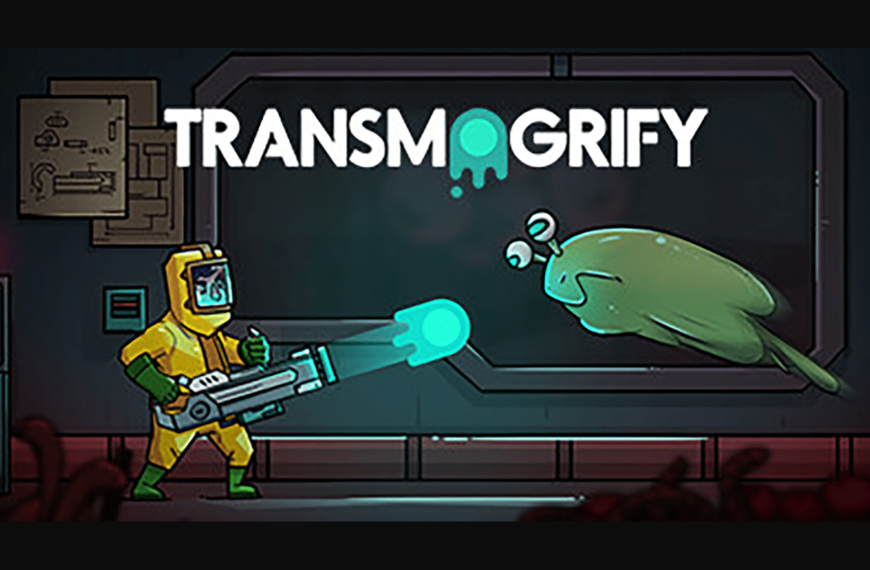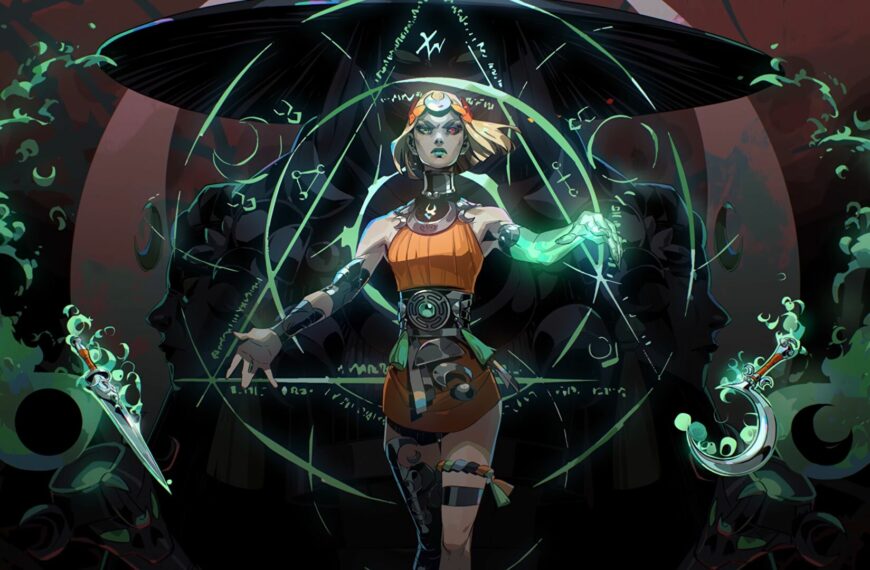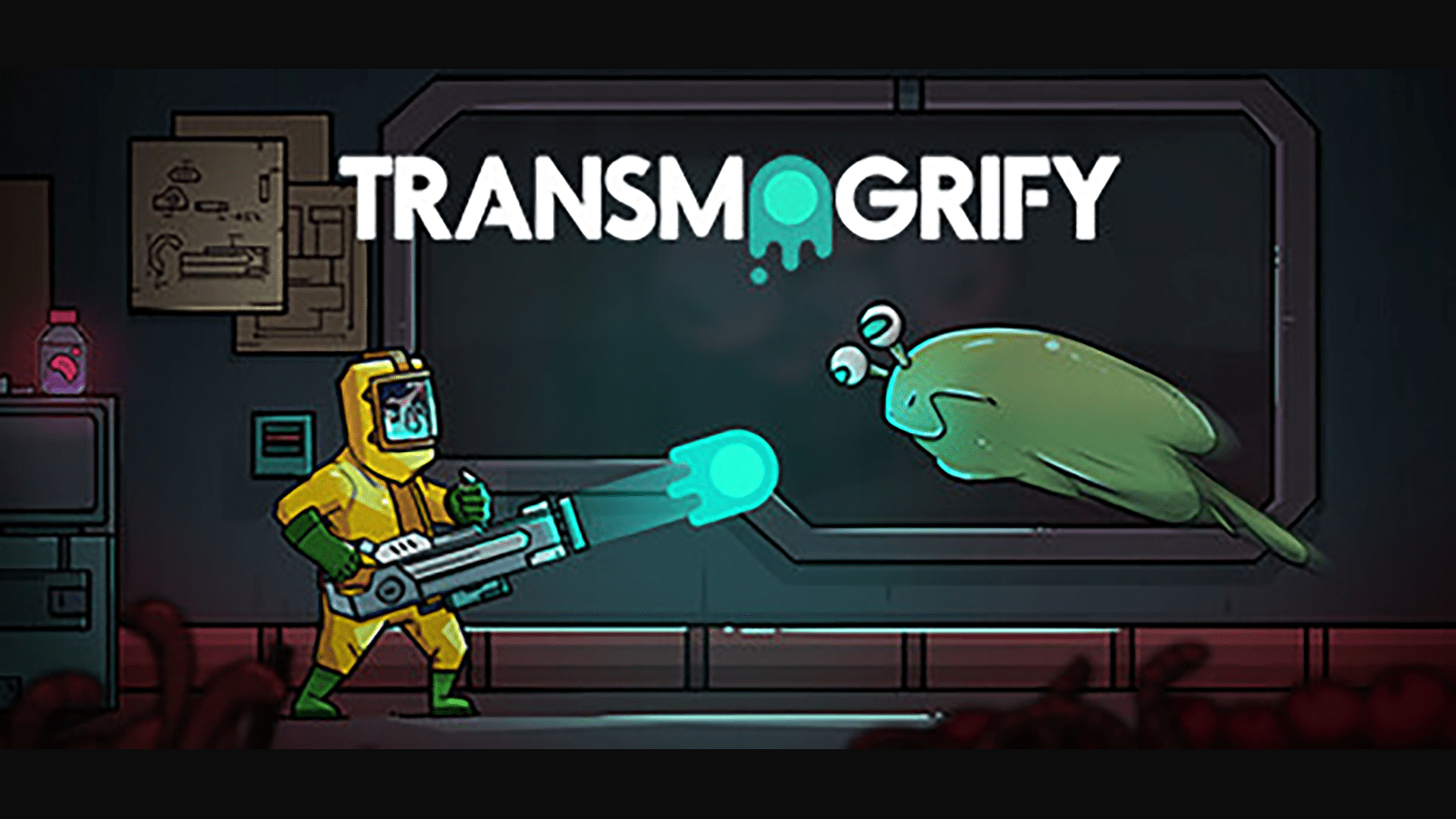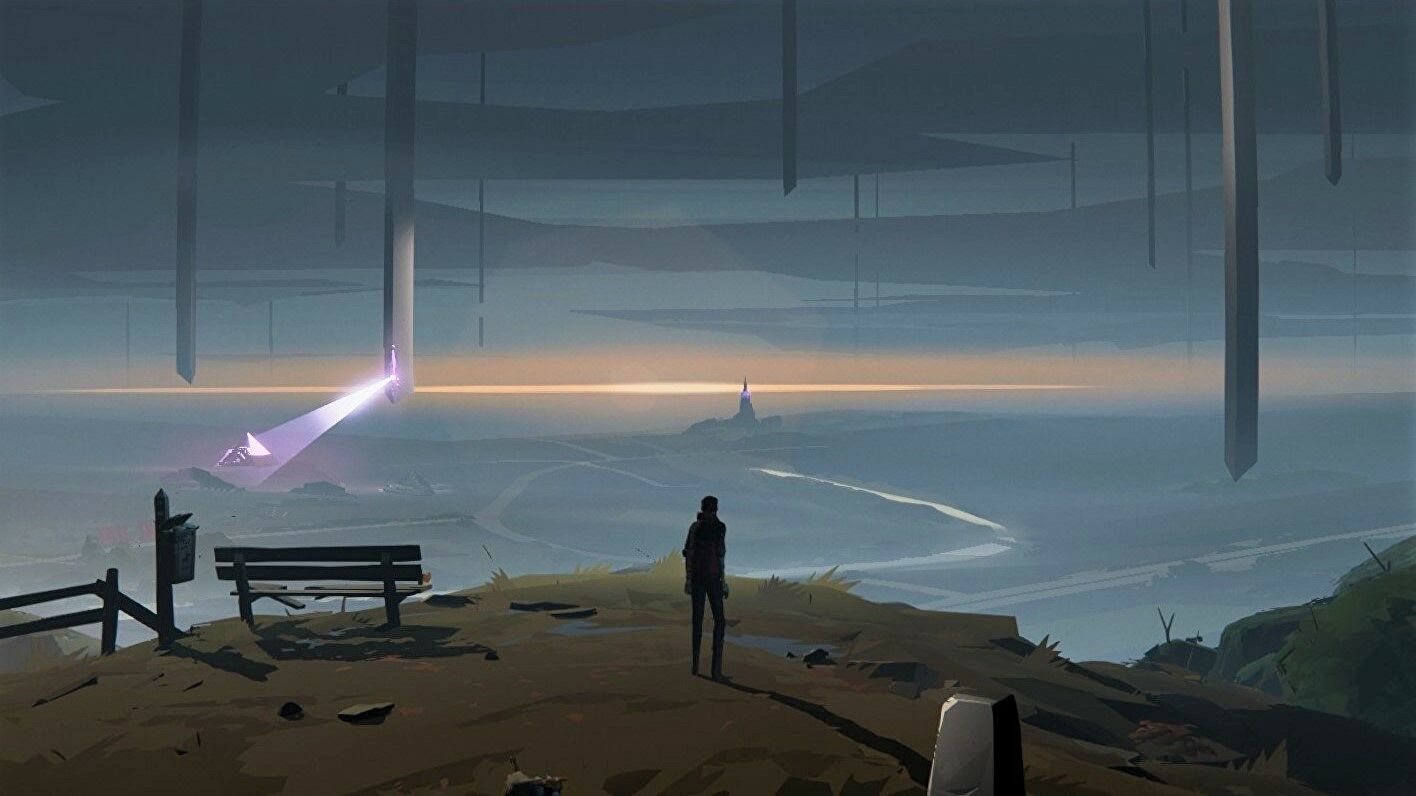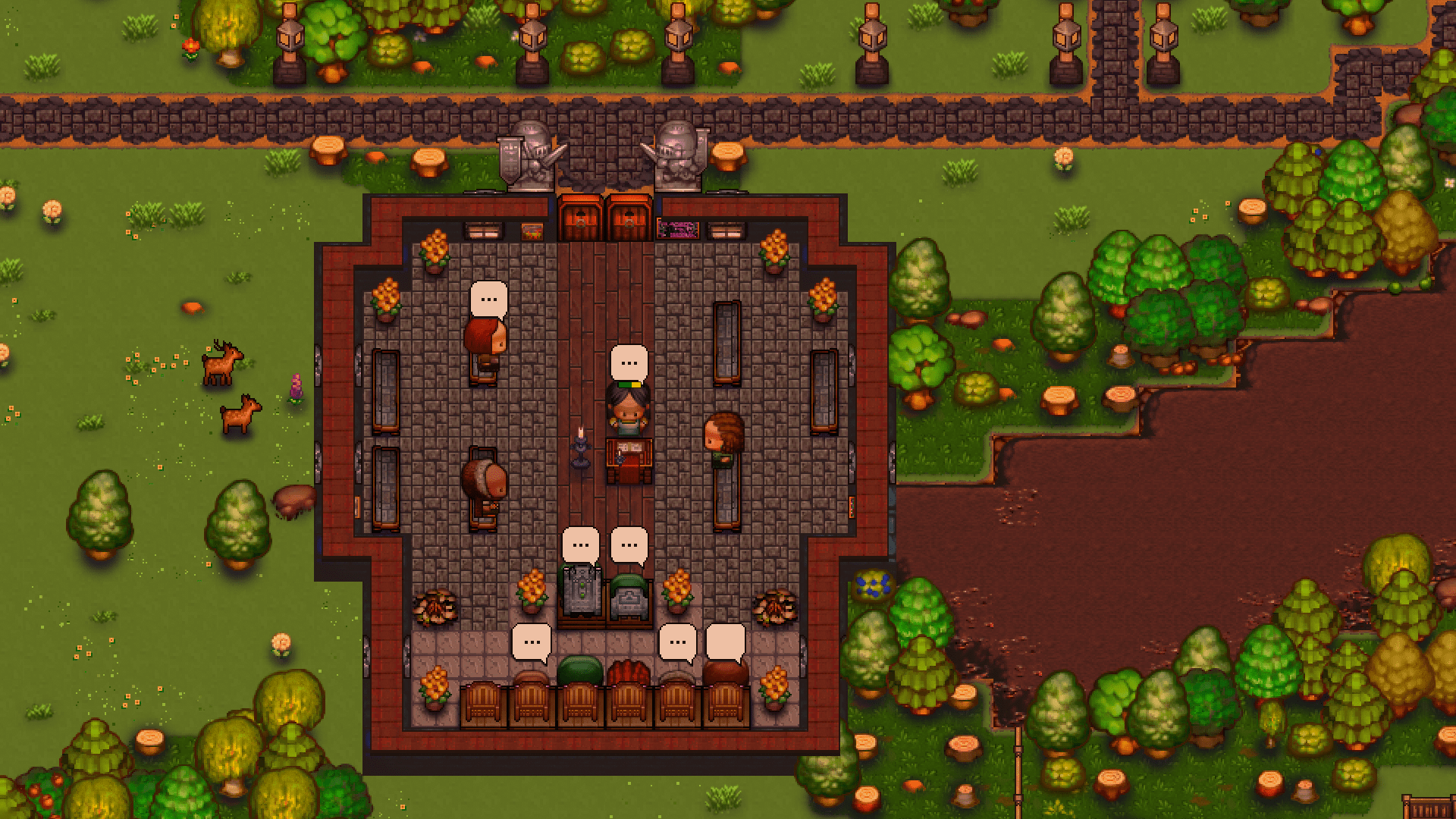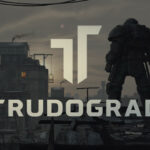Some of you might remember that I mentioned in my Neon White review that I was dreading the inevitability of reviewing a Soulslike. Well, my reckoning has arrived.
The Soulslike genre and I have a… tumultuous history. Back in college I had the chance to play Dark Souls 2 and after ten or fifteen minutes I was killed by a boss inexplicably moving their attack to hit me after I dodged (with no animation, mind you) and was told that I’d gone the wrong way. In fifteen minutes. In a game without directions. It was such an unfun experience that I swore off the franchise. And if you’re thinking about saying something, every single one of my friends who likes Dark Souls that I’ve told that story to has told me that my reaction was fair, so don’t even try it. While I have played a Soulslike through to completion of the best ending, that is also the only Soulslike I have any real firsthand experience with before this.
Now that we’ve established why I am in fact the single most qualified individual on the planet to talk about Thymesia, let’s talk about Thymesia.
Thymesia is a game about a kingdom ravaged by plague, something I wish was less relatable. You play as a mysterious figure named Corvus, with the goal of finding some means to curing the plague and the mysterious alchemy that has turned men into monsters.

Apothecary
It might be more accurate to classify Thymesia as a Soulslite like how Roguelite is its own subgenre of Roguelike.
Let me try to explain.
Thymesia plays exactly like the Soulslike formula if you scaled every single system down a few notches. The maps are winding and sprawling, but almost completely linear, with any side paths being dead ends with loot at the end or some kind of shortcut you can open to a previous area. You enter a map via a level select screen with a set objective. Defeating the main level boss unlocks selectable side quests that usually involves the same map but with some doors now unlocked and other pathways now blocked off.
You only have three stats that you can improve by leveling up. There aren’t weapons or armor that you can equip or upgrade. (Sort of, I’ll explain later.) There’s maybe two dozen different enemies in the game, excluding the bosses, of which there are eight.
While you gather experience points by defeating enemies and drop all of them upon death, requiring you to go back and recollect them, they are not any kind of currency, nor is there any currency or item shop at all.
Thymesia doesn’t even have a stamina bar, so the only thing stopping you from dodging endlessly is the brief cooldown between them. And nothing is stopping you from mashing the parry button and hoping for the best.
That last point about parrying is definitely deliberate, as several enemies attack so quickly that you absolutely need to do that to have a chance at stopping every hit.
So if you’ve ever thought that Soulslike games are interesting but you don’t think you have the time or patience for one of the big ones, Thymesia might be perfect for you.
Combat in Thymesia is entirely based around the Wounds system, and I would be lying if I claimed I 100% understand how it works, but I also beat the final boss so I’ll try my best to explain. Basically, every enemy in the game has a second health bar obscured by the first one. By using Corvus’s sword you can shave off this white health bar to expose the green one below it. You can then use his Claw attacks or Plague Weapons (I promise I will explain what I mean, hold on a little longer) to shave down this green health bar.
Here’s what’s interesting. You can’t get the green bar lower than the white one, and if an enemy goes too long without taking damage, the white bar will start to heal back to where the green bar is. Once both bars are depleted, the enemy will collapse and wait politely for you to execute them in a coup-de-gras. I don’t know if they ever get back up if you wait to long. I didn’t risk it. This encourages you to fight aggressively as you can to keep your opponent from having a chance to recover.
Corvus himself has no such mercy, and any damage you take will stick around until you heal it manually.
I genuinely really enjoy this system and find the way it makes me think about combat really fascinating, but it also means that fighting more than one enemy at a time is substantially harder than you might expect, even if they’re both pitifully weak at your level, because of their ability to cover each other and heal. In combination with an elite enemy, or God forbid a miniboss, you are in for a rough time.
But now, finally, I’ll talk about those other, equip able, upgradeable plague weapons I alluded to earlier. I promised I would!
Thymesia has a gimmick where you can copy the weapon of every enemy in the game, and yes that does include the bosses. By charging up a Claw attack and landing it, you deal a good chunk of green damage and get a copy of their Plague Weapon, a one-use attack based on one of theirs. All of them are unique and better for certain situations. And when I say one-use attack, I mean that you fire the bow and arrow once, but you make three stabs with a spear, or go through a whole 30-second-long combo with the twin swords.
Additionally, you can get a permanent copy of those weapons—yes, still including bosses—by acquiring dropped Weapon Shards from them. While you can only have one (or two with a specific upgrade) of these equipped and you can only change them out at the Beacons, these are easily some of the most useful parts of your kit.
This does have the unfortunate side effect of limiting the enemy variety. There are only 14 non-boss weapon types, and at least four of those are exclusive to minibosses. There’s a lot of enemies that are functionally identical to other enemies but stronger, and sadly most of the main enemies are some variation on ‘just a guy.’ It certainly helps sell that the plague has ravaged the knights and royal guard, but I’d been hoping for a little more variety in nightmares trying to eat my face.
I’m also a bit disappointed that of the game’s eight bosses in total, three of them are also ‘just guys,’ though, of them, one has the decency to be unreasonably large and the other has an optional rematch where he makes himself part tree, so that’s pretty cool I would say.
(Interestingly, the rematch is considered a separate boss fight entirely, which makes that an entire 25% of the boss fights in the game are against this one guy, provided you don’t count the tutorial boss fight as a real encounter.)
Also Read
Transmogrify PC Review: The Best Way To Defeat An Enemy
A video game protagonist wakes up in an on-fire science lab with nothing but an AI and a high-tech gun to…
Defy the Gods as a Witchy Moon Goddess in Hades 2
Greek-mythology-themed roguelike Hades is getting a sequel, but developer Supergiant has kept the details scant beyond a Hades 2 reveal trailer…
But don’t let the saturation of ‘just a guy’ bosses dissuade you; this game understands spectacle. I honestly don’t want to describe the God of the Fools, the Hanged Queen, or the Voice of the Abyss fights because seeing these things you have to kill for the first time is truly something special.
Though now that it’s time for me to start picking some nits, I am going to complain that the God of the Fools is more of a stage hazard than a proper boss fight.
The game also has a problem with the lock-on. Namely, the camera has to be able to see an enemy to lock on. If you’re facing an enemy that’s offscreen, you can’t make the camera lock on to them, and that will happen a lot when you’re finishing off enemies or smacking someone back into a corner. I also found that if there is an obstacle between the camera and the enemy, no matter how thin, you can’t lock onto them. Like a crumbled pillar that was once part of a staircase railing, from experience. I also once had the camera behind a thin wooden wall, and while the wall turned translucent so I could see, I couldn’t lock onto anyone because of that wall.
Some of the hitboxes are wonky up close, which is a problem in a game primarily about melee. The Halberd miniboss was especially bad about this, and about registering when I’d used a knife throw to interrupt him. And I managed to get myself and an enemy stuck together in a corner on no less than three occasions.
Not to mention my usual problem with the Soulslike genre making you drop all of your experience on death, encouraging a sunk-cost fallacy approach instead of encouraging you to back off and try something else, or to level grind. The linearity of Thymesia especially does not help with that.
However, even with those grievances, the combat in Thymesia is smooth and stylish while still being challenging without (usually) being unfair.
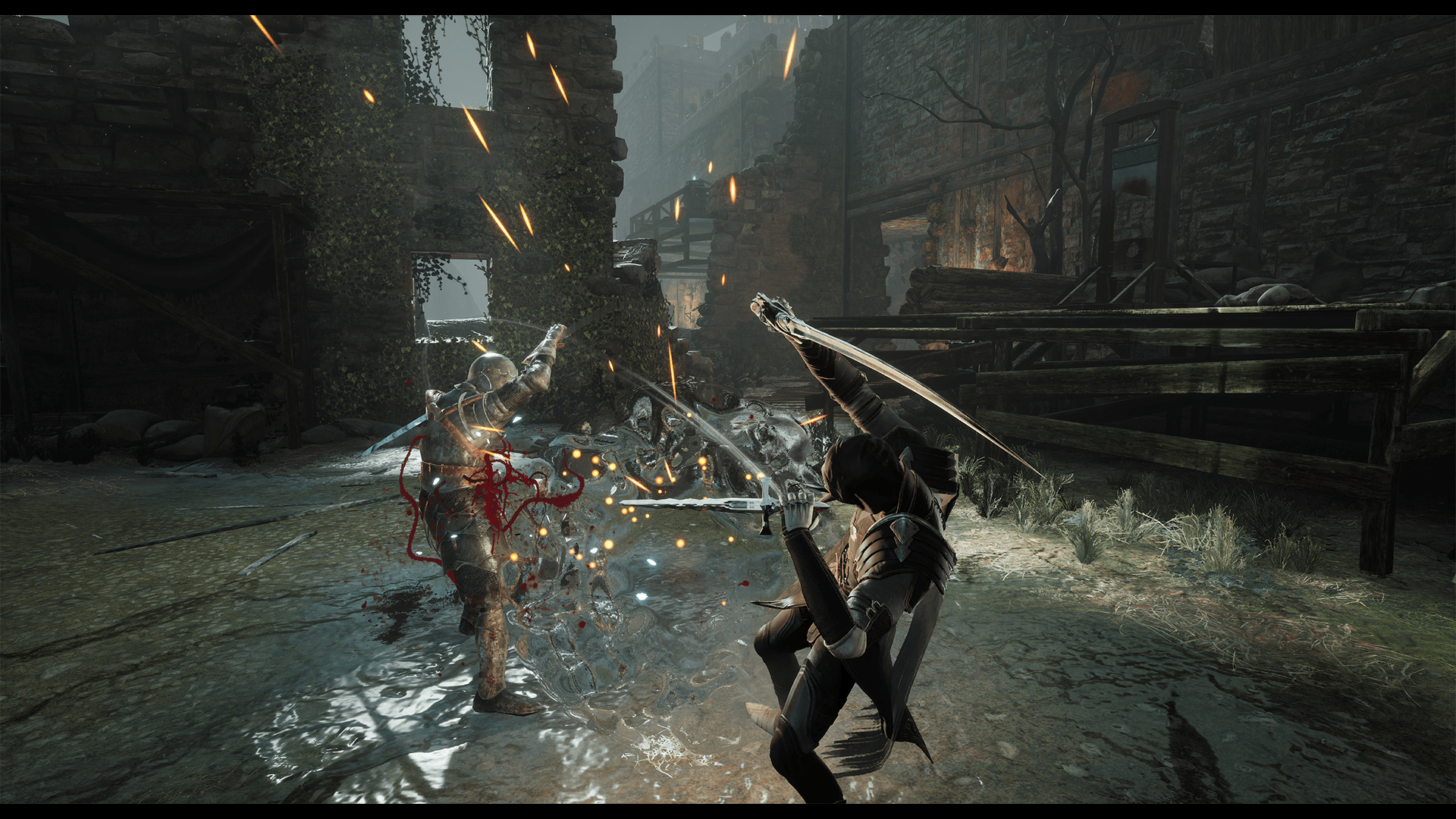
Cure or Poison
Thymesia looks very pretty, but nothing it does, either graphically or aesthetically, is anything you haven’t seen before. It’s a gothic dark fantasy with a more realistic and gritty appearance.
Gothic is actually a good description for this game, compared to something more Lovecraftian or Tolkien-esque. Think Mask of the Red Death.
However, the set design is exquisite. Each of the game’s dungeons has its own unique aesthetic to it providing hints to how exactly everything went sideways, like how the underground laboratory is almost completely tunneled cave with long-destroyed stone brick floors, or how the fort has wooden construction work in progress around the destroyed sections.
Enemies tie into their home levels as well. The stronger enemies have growths coming from them, but their growths are unique to the level they’re from, helping to make them feel at home.
Certain background elements tie into the lore, like how the kingdom is built around a giant tree that you can see overhead while you’re outdoors.
This game’s sound design truly shines. The music is frantic and tense, and I adore each of the boss themes. Especially the first boss. When his theme changed to a higher-strung version when I hit his second phase, the noise I made could only be vaguely described as human.
Not to mention the sound effects. The weapons all sound like they have weight to them, and the sound effect for triggering executions is downright euphoric.
I am disappointed that despite there being voice acting for things like laughter and grunts, the dialogue is not voiced at all. Though, then again, if that first boss had voiced dialogue, he would’ve put my foolish ambitions to rest if you get what I’m saying.

Crystallization
Thymesia is unusual for Soulslike games for having your protagonist be someone who was actually largely present for everything going horribly, horribly wrong instead of happening across it after everything went down.
Luckily, the tutorial boss politely concusses you so badly that you spend the rest of the game recovering from the amnesia.
That’s not a joke. That’s actually the plot.
This game handles the in-universe explanation for you respawning by giving the game a framing device of you trying to recall what led up to where the game opens so that you can be certain that your plague cure won’t make everything worse.
And if you aren’t paying enough attention to the lore, then it will.
That’s right, what ending you get is based on a lore pop-quiz! Hope you studied!
Figuring out how to cure the plague and the monstrous transformations means learning about not only the plague, but the attempts to cure it through alchemy, and the mysteries surrounding the Pure and Vile Blood produced in those experiments.
Most of your information comes from the scattered papers and journals you come across in the dungeons, or from posters and signs that you can read. The game highlights unread information for you so you know what to look for.
Other lore comes from the cores dropped by each boss, which can be brought to your companion at the hub area and to her mentor, the alchemist Emerald who is hiding somewhere in every level.
The game has a journal where you can see all the lore you’ve collected and how much there is total, so I can say with certainty that I have the vast majority of the game’s lore, but it leaves many things unanswered. I have inferences for why things went so horribly wrong, but I don’t think I’ll ever be certain, and that’s probably intentional.
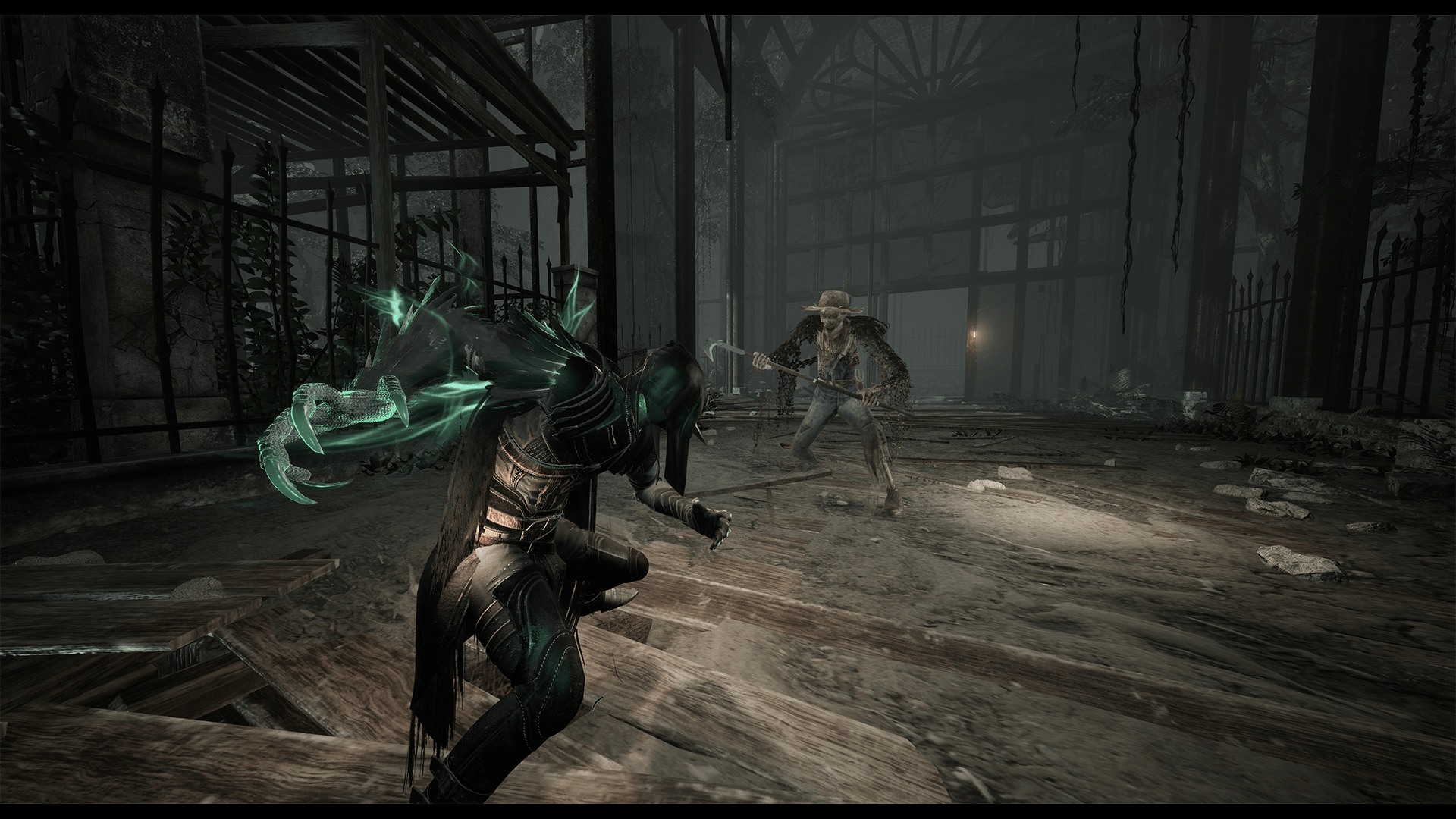
Conclusion
Thymesia is an excellent gateway into the broader Soulslike genre. The combat is fast and frantic and rewarding. The scenery is gorgeously horrific. These are some of the most fun I’ve had in boss fights in a game before, especially the final boss, which while hardly knew is executed so flawlessly I simply have to adore it.
If you’re one of the people mad that I call the genre Soulslike, you really won’t like knowing the official term for FPS games used to be ‘Doom Clones.’
Our Rating
Story
Gameplay
Visuals

